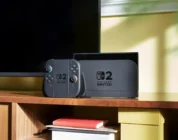Behind this extended name lies a relatively simple game, which is motivated only by your desire for exploration. Produced by the small Australian studio called Prideful Sloth – mostly counting Activision and Rocksteady alumni, Yonder: The Cloud Catcher Chronicles does not hide its similarities to certain titles like Harvest Moon or Zelda, but offers something quite unique in the world of adventure games: a real journey without any imperative goal or danger.

Beginning with a character editor that is quite basic and does not really include any personalization other than the character’s gender and hair/skin color, Yonder plunges you into the adventure immediately, aboard a ship plagued by stormy and turbulent waves. You then find yourself on the nearest island, called Géméa, where you will meet small spirits requiring your help to eradicate the scourge that plagues this haven of peace: The Murk.
Exploration Above Narration
If the initial pitch can suggest that your journey will be full of pitfalls and dark monsters you’ll need to fight to purify the island, it is not. We are even very far away, for the only creatures to populate Geméa are only adorable animals such as herbivorous foxes or innocuous bisons. The Murk, although initially described as a threat to the inhabitants of the island, is actually translated into a mere violet mist, blocking access to certain areas. By collecting the spirits, that number twenty-six in total, you will be able to clean the different areas, and eventually discover where this curse comes from.
The main quest is limited to that, but playing in that capacity, with only that goal in mind, would have you miss out on what makes Yonder’s essence. Once the prologue has been completed, the whole island will be offered to you, aside from the zones tainted by the Murk, inviting you to explore it on all its surface, armed only with your tools and your magic compass. The latter is a great help in avoiding getting lost thanks to a light beam pointing towards the place where one of our quests tells us to go. With a simple touch of a key, it allows you to visualize the different tasks/quests that are available through a clear and detailed navigation. While I did regret not being able to place markers on the map, that is a very meager concern.
This map proves to be quite large, full of small shortcuts and branching path, allowing you to indulge into your curiosity to the maximum, exploring every nook and cranny to discover what is hidden there. This is the great force of the game, where the journey is not driven by a material reward like a legendary sword or a very rare item. Sometimes, climbing a distant hill or exploring a mysterious cave will have no other meaning than to satisfy your curiosity, with the landscape and the feeling of wonder being the only tributes of your efforts. Though it is difficult to speak of efforts, as exploration is made accessible.
With the absence of a game over or tensions related to dangers, traveling through Géméa is a real pleasure without any obstacle. Falling into the water will only cause a black fade that will take you back to dry land, while your umbrella will make you soar if you stumble from a cliff. People who are not looking for a peaceful and relaxing game have a vested interest in moving on. Yonder is built to escape, living dream, and relaxing without asking yourself other questions.
Casual Gathering and Crafting
Despite this very open and accessible side, the game has some crafting and gathering components that prove to be rather engaging. Using various tools such as a pickaxe or a hammer, you will be able to harvest many materials, or even fish via a very simple mini-game. All these resources can be requested by the inhabitants of the island to fulfil the various quests available from unique characters like the bearded woman and the fashionista scarecrow. If one can somewhat regret the lack of background and writing in these tasks, they add to this idea of lightness and constant travel. The game offers many, and it is not uncommon to end up with more than twenty quests waiting to be completed, which is explained by the fact that the player is always attracted somewhere.

Thus, the harvesting of these objects happens naturally on the way, and does not appear as a bumpy task. Moreover, the absence of an instantaneous rapid journey – which can be a little annoying sometimes – participates in these wanderings, offering you the opportunity to fill up your inventory on the journey. This may prove to be a problem at times, as it should be noted that inventory management is not the most effective. After a few hours of playing, I found myself out of inventory space, and considering the number of items you’ll be hoarding both for quests and your personal crafts, it can become a handicap. Chests are naturally available to store our surplus, but their lack of direct access will sometimes make us sacrifice certain resources at the expense of others.
Besides the harvest, there is another way of obtaining these commodities: trading. Do not rely on coins or other local currency to pay, since everything is based on a barter and exchange system. In order to get the items you want at the merchant, you will need to exchange items with the same market value. This system has its small subtlety: depending on the place, some types of objects will have more value than elsewhere. No need to sell stones to the inhabitants of the mountain, they will offer you much more for a few pieces of wood.
 These materials, besides being important for the quests of the inhabitants and for the commerce, will also be used to construct buildings, like bridges allowing you to discover new areas, or farms. In the latter, you can adopt animals, which will provide you with various objects if the farm is well maintained. You can customize this space as you wish, but the possibilities when it comes to crafting remain quite simple and are limited to a few elements, the game being far from the diversity of Minecraft. Note, however, that despite a very basic character creator at the beginning of the game, the personalization of your adventurer during his epic is quite pleasant. It is possible to create clothes of all kinds, and especially unisex, offering you many choices.
These materials, besides being important for the quests of the inhabitants and for the commerce, will also be used to construct buildings, like bridges allowing you to discover new areas, or farms. In the latter, you can adopt animals, which will provide you with various objects if the farm is well maintained. You can customize this space as you wish, but the possibilities when it comes to crafting remain quite simple and are limited to a few elements, the game being far from the diversity of Minecraft. Note, however, that despite a very basic character creator at the beginning of the game, the personalization of your adventurer during his epic is quite pleasant. It is possible to create clothes of all kinds, and especially unisex, offering you many choices.
An Artistic Direction That Favors Immersion
If the question of the graphics has not yet been addressed, it is because it is difficult to judge Yonder on this criterion. One can actually note textures that sometimes come dripping out of the map, and some somewhat obvious, in addition to some micro-slowdowns according to the zones. These points could have been embarrassing if they were not completely eclipsed by the artistic direction of Geméa, offering the player a constant wonder, reminiscent of that particular style that Zelda The Wind Waker possessed. There is an undeniable charm here, and at every level, whether in the sets, the animals or the characters, that make this universe incredibly immersive and poetic.
All this is embellished with a discrete soundtrack that adapts itself perfectly to the tone of the game, offering some joyful and intoxicating themes. Concretely, everything is assembled to offer you the most pleasant experience possible. While you will not need more than a handful of hours to complete the main quest, you’ll need much more time to explore and uncover Geméa’s many secrets. The best advice to give is therefore to take your time, because it is your curiosity that will actually depend on the lifespan.
Conclusion
Yonder: The Cloud Catcher Chronicles is undoubtedly a singular game, in many ways. Surely, it will not suit those specifically looking for challenge or a strong narration. To appreciate it, one must accept it for what it is, namely a real initiation to immersion and travel. By removing all sense of urgency, Yonder proves that the desire for exploration can be quite a sufficient experience, and shows with humility and sincerity that an adventure can be exciting, even without danger.

